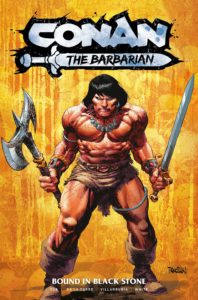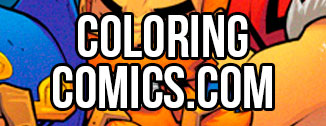While blabbing away on Twitter last night the conversation organically moved into comic writing. Explaining my process in short 140 character tweets was kind of a pain, and I realized it was worthy of a few blog posts, so here goes.
Comic writing is pretty free form in that there’s no standard format. Some writers do broad outlines of what’s happening in the issue and then let the artist draw the story, coming back at the end to add dialogue to the pages (this is the original ‘Marvel Method’) but that’s pretty rare nowadays. The stories being written now are way more intricate and most artists aren’t used to winging it quite so much.
The norm at this point is ‘full script’, which is just what it sounds like – writing out page by page and panel by panel descriptions of the action and dialogue so the artist can plan and illustrate the entire issue. It’s more time consuming, but also a lot more focused. Even within that full script approach, unlike movies and TV, there’s no standard for script format, terminology, spacing or anything. Each writer kind of kit-bashes a script format together that works for them and goes from there. If the format is clear and the artist gets the information they need, that’s the most important part. Everything else is just personal preference and a general professional look to the work. I previously posted up a copy of my script for Skullkickers #1 you can check out HERE if you want to see my particular scripting style.
I’m a story planning junkie. I know there are people who just dive in and start writing ‘page 1’ without any idea where things will go, letting the muses kiss their fingertips clattering along the keyboard, but I’m not one of those people. I plan a lot of the story structure up front and it’s time consuming, but once that idea and pacing phase is done I write fearlessly because I know the overall plan and won’t lose my way. I can clearly visualize scenes and anticipate how they’re going to play out, driving me to get to them. If I come up with better ideas along the way or inspiration strikes a scene, I can work it into the structure and adapt. I rarely need to cut or heavily revise material because I’ve built a solid story foundation to work from.
So, how does that work?
The first thing I do is brainstorm a series of point form ‘things’ – facts that need to be relayed to the reader so the story makes sense – character traits, settings, antagonists, goals, character changes or revelations. It’s a giant jumble of story ideas, characters and key moments – the raw story ingredients all piled up.
Then, I look at the length of my story. If it’s a work-for-hire comic story then the format is probably a set number of pages. If it’s my own project then I rough out how much space I think I’ll need to make it work (number of issues or number of pages for a self-contained graphic novel). Once I know the number of issues/chapters I can start to plug in my jumbled pile of elements and get a sense of story flow.
The classic approach to story flow is called the ‘3 Act Play’ and it’s one constantly used for movies, sitcoms, short films, novels… you name it. If you don’t know what it is and you’re shown it, you won’t be able to un-see it, but that’s not a bad thing. It’s a very logical way of building a story and isn’t as rigid as it may sound.
In simplest terms:
ACT 1 – INTRODUCTION: Who, What, Where and When (‘Why’ may not be answered in this stage). Who are the main characters? What are their initial goals? Where are we? When does this take place? Giving your audience this information in an entertaining way engages them and preps them for the larger story to come. Even in a mystery you need to impart enough of the above for people to feel grounded in the story and ready for act 2.
TRANSITION – THE CHOICE: In the classic version of the 3 Act Play the transition between Act 1 and Act 2 is the main character(s) really diving in to the challenges before them in a way they can’t go back from. If they could just back away without consequence, then the threat level doesn’t seem so bad. Once they’ve agreed to the mission, told that person they want to date or picked up the cursed artifact, they’re pulled in and can’t go back to their old life. They have to work through the resulting conflict.
ACT 2 – CONFLICT: Conflict can take on many forms and most stories have multiple types of conflict woven together. Physical, mental, emotional conflict. This is where all those classic concepts of Man VS Man, Man VS Nature, Man VS Technology, Man VS Society, Man VS Himself, Man VS Wo-Man comes into it. Your characters need something to rail against. Epic or mundane, there’s something to overcome. When it comes to classic Hollywood blockbusters this tends to be once-in-a-lifetime kind of conflict where people are saving the kingdom, the world, the universe kind of stuff, but conflicts can be as quiet or bombastic as you want. Romantic comedies have the exact same structure, just with a different set of goals and outcomes.
This act is the real meat of your story. Ideally, the audience wants to enjoy the shifting threats, victories, failures and unexpected twists that come from the conflict. There’s usually ‘callbacks’ to the things we learned about the characters from the introduction, but not so obviously that the audience can see exactly where the story is going. Creating unexpected but appropriate conflict is one of the toughest elements of storytelling, especially with a media culture that’s inundated with stories and has ‘seen it all’. If you can surprise them, that’s ideal. If not, at the very least make them care about the characters so they want to see it through to the end.
TRANSITION – CLIMAX: The biggest action, the most important decision, the most intense outcome is almost always saved for the end of act 2. It’s the payoff for everything we’ve built and is called ‘climax’ for a reason. This is where people admit their love for one another, the world is saved or the most ridiculous special effects money is spent. After this, it’s a steep downhill finish as things are resolved.
ACT 3 – RESOLUTION: Did they live “happily ever after”? Are their lives an echo of who they were at the start? Has everything changed after conflict? This act tends to be the shortest since the audience has been given almost everything and we’re emotionally winding down. Medals are given out, things are learned (or ignored) and credits are rolled. If this is just one part of a larger story then there may be a lot of unanswered questions, but that’s okay as long as we’re keeping them in mind for the future, things moved forward and felt relevant to the whole.
An even shorter way of explaining it is the old stage magic credo:
“First I tell ’em what I’m gonna do, then I do it, then I tell ’em what I done.”
That’s a weird part of working on Skullkickers. Even if it feels ridiculous and random (because that’s how I want it to come across), the structure underneath isn’t. I’ve created a story that reads like it’s out of control and can’t possibly all work, but after the original short stories it was actually tightly built to feel that way. Underneath that chaotic mass is a larger structured story I’m chipping away at that, if I do my job correctly, will pay off in exciting ways, surprising the audience while still feeling appropriate. That’s the plan, anyways.
Whew. Okay, I went into a bit more depth then I’d originally planned. In another blog post I’ll talk about how I take my idea pile and use aspects of the 3 Act Play to make it all work together.





 Zub on Amazon
Zub on Amazon Zub on Instagram
Zub on Instagram Zub on Twitter
Zub on Twitter
Thanks for the script. Very informative!
I’m late to the party, but I’ve found these posts extrememly helpful and am glad I found you. In another resource I refer to for writing series, the writer urges to create the world first before anything else (plotting, casting, etc.), I wanted to know your thoughts. Do you think it could be beneficial…necessary?
When starting off I think it might be overkill. I recommend starting off with short stories and building up storytelling craft before going into something where extensive world building would be necessary, but that’s me. Some people start with characters, others with plot, others with the world. Any method is valid if the end result is a good story.
Hi, Jim —
Considering dipping my toe into the comic waters, and recalled your name and site being mentioned. Really getting a lot out of it.
Quick note: your links for your Skullkickers #1 script aren’t working. Any chance you can fix them so we can see the voodoo you do so well?
Thanks!
Thanks for letting me know that the script links weren’t working. They’re fixed now. Click away! 🙂
zubbiiiiiiiiiiiiiiiiiiiiiii loves u habibi i like ur name are u arabic
Very nice!!! I already knew about the 3 action Play, but the “connections” in between have given me a very rich information to add as logic and necesaary parts to the basic structure!
Hi Jim, we met at NYCC 2016 At yours and Charles’ writing comics panel. I’m working on a miniseries at the moment, and it is a bit of an ensamble piece. I was sondering hos wuch of each character one should usually put per issue?
Thanks, Gearod
That’s a really broad question so it’s hard to give you a definitive answer. It depends on how many characters, how they all tie together and your story goals. It’s not really the kind of story structure question anyone can just tell you the answer to. You have to build it and then see how it’s flowing and adjust from there. Best of luck on your comic project.
Hi Jim,
This site is a wealth of great information. Thank you for sharing it! I have a question: a lot of writing info deals with plotting/planning a single issue. I’m curious how you plot a limited series (4-6 issues). For example, do you do an overall 3-act structure, and say, issues 1-2 are act 1, issues 3-4 act 2, etc?
I ask because I have a screenwriting background, and utilize The Blake Snyder Beat Sheet (https://timstout.wordpress.com/story-structure/blake-snyders-beat-sheet/) and Chris Soth’s Mini-Movie method to plot the story, and wondered if/how something like that can translate to a limited series comic.